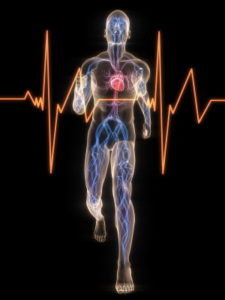
Your heart rate, or the number of times your heart beats in a minute, is an important indicator of your heart health. However, most people know very little about their heart rate, or what its variations indicate about their general health.
What is heart rate?
Your heart rate is the number of times your heart pulses per minute. Activity level, fitness level, body size, emotions and even medications can influence the rate at which your heart beats. For example, at rest, a healthy heart rate falls in the range of 60-100 heart beats per minute.
Your heart rate goes up when you exercise because your heart needs to pump more oxygen-rich blood to cope with the physical activity. It reaches its maximum level during intense exercise – this is known as your maximum heart rate. It can be estimated using a simple formula: 220 – your age = maximum heart rate.
Exercising at 60-80 per cent of the maximum heart rate gives the most cardiovascular benefits and is termed the “target heart rate zone”. In some people, doctors recommend a lower range, e.g. 50-75 per cent of the maximum heart rate.
You can find out what your heart rate is by taking your pulse. To take your pulse at your wrist, place two fingers on the artery on the inside of your wrist, just below the thumb. Count the beats for 15 seconds and multiply by 4 to get the number of heart beats in a minute.
Myth 1: There’s one normal for blood pressure and heart rate.
Fact: There are guidelines, but what’s normal varies from person to person. Optimal blood pressure is typically defined as 120 mm Hg systolic (the top number, which is the pressure as your heart beats) over 80 mm Hg diastolic (the bottom number, which is the pressure as your heart relaxes).
For your resting heart rate, the target is between 60 and 100 beats per minute. But keep in mind, both heart rate and blood pressure are a customized fit. You need to work with your doctor to establish a baseline that’s normal for you.

Myth 2: A resting heart rate of 50-90 beats per minute is a cause for worry.
Fact: Such a resting heart rate does not mean that there is something wrong with you, or that your heart is weak. Individuals who exercise a lot may have a resting heart rate < 60 beats/min. A low resting heart rateis only of concern if there are concomitant symptoms such as unprovoked fainting, giddiness and a reduced level of activity.
Myth 3: An erratic or irregular heart rate is a sign of impending heart attack.
Fact: An erratic or irregular heart rate is not a sign of a heart attack. An erratic heart rate may accompany a heart attack but it can also arise on its own, because of other factors. It does not cause a heart attack.

Myth 4: A normal heart rate means the blood pressure is normal.
Fact: A normal heart rate does not mean the blood pressure is normal. A person can have a normal heart rate and still have high blood pressure. Conversely, someone with an abnormal heart rate can have normal blood pressure.
Myth 5: A fast pulse means you are stressed out.
Fact: When a person is stressed out, the body may release chemical substances that cause the heart to beat faster. However, a fast pulse does not always mean that you are stressed out. Certain medical conditions may cause the heart to beat fast without any stress.
Myth 6: You burn more fat at a higher heart rate.
Fact: From an exercise physiology point of view, the fat burning zone occurs at 45-60 per cent of the maximum heart rate. However, the fat burning zone does not necessarily mean you’re burning a maximum of calories. You may burn more calories when exercising at higher intensities, but the percentage of calories coming from fat is slightly lower.

Myth 7: We have a predetermined number of heart beats in our lifetime. So by exercising, we may be using them up too fast.
Fact: We do not have a set, predetermined number of heart beats in our lifetime.

No comments:
Post a Comment